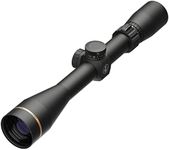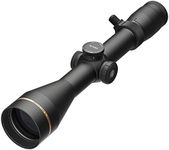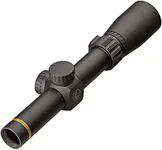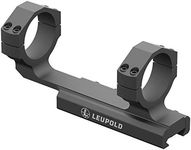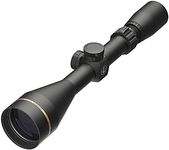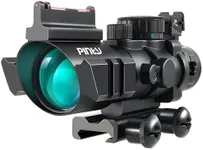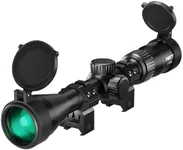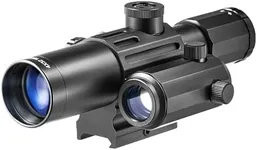Buying Guide for the Best Leupold Scope For Ar 308
Choosing the right scope for your AR-308 can significantly enhance your shooting experience, whether you're hunting, target shooting, or engaging in tactical operations. The key is to understand the various specifications and how they align with your specific needs and preferences. Here are some important specs to consider when selecting a Leupold scope for your AR-308.MagnificationMagnification refers to how much closer the target appears through the scope compared to the naked eye. This is crucial because it determines how well you can see your target at different distances. Low magnification (1-4x) is ideal for close-range shooting and quick target acquisition, medium magnification (5-9x) is suitable for mid-range shooting, and high magnification (10x and above) is best for long-range precision. Choose the magnification based on the typical distances you will be shooting.
Objective Lens DiameterThe objective lens diameter is the size of the front lens of the scope, measured in millimeters. This spec is important because it affects the amount of light that enters the scope, impacting the brightness and clarity of the image. Larger diameters (40mm and above) provide better light transmission and are beneficial in low-light conditions, but they can make the scope heavier. Smaller diameters (below 40mm) are lighter and more compact, suitable for daylight shooting. Consider your typical shooting environment when choosing the objective lens diameter.
Reticle TypeThe reticle, or crosshair, is the aiming point you see when looking through the scope. Different reticle types serve different purposes. Simple duplex reticles are great for general use and quick target acquisition, while more complex reticles like mil-dot or BDC (Bullet Drop Compensator) are useful for long-range shooting and estimating distance. Choose a reticle that matches your shooting style and the complexity you're comfortable with.
Turrets and AdjustmentsTurrets are the knobs on the scope that allow you to adjust for windage (left/right) and elevation (up/down). This is important for ensuring your shots are accurate at various distances. Some scopes have exposed turrets for quick adjustments, while others have capped turrets to prevent accidental changes. Consider whether you need quick adjustments in the field or prefer a more secure setting.
Eye ReliefEye relief is the distance between your eye and the scope where you can see the full image. This is crucial for comfort and safety, especially with the recoil of an AR-308. Longer eye relief (3.5 inches and above) is generally better, as it allows for more flexibility in positioning and reduces the risk of scope eye injury. Ensure the scope you choose has adequate eye relief for your shooting style.
Durability and Build QualityDurability and build quality are essential for ensuring your scope can withstand the rigors of shooting and environmental conditions. Look for scopes that are waterproof, fog-proof, and shockproof. High-quality materials and construction will ensure longevity and reliable performance. Consider the environments you will be shooting in and choose a scope that can handle those conditions.
Parallax AdjustmentParallax adjustment helps to ensure that the reticle remains on target even if your eye position changes slightly. This is particularly important for long-range shooting. Some scopes have a fixed parallax, while others offer adjustable parallax settings. If you plan on shooting at varying distances, an adjustable parallax can be very beneficial.
